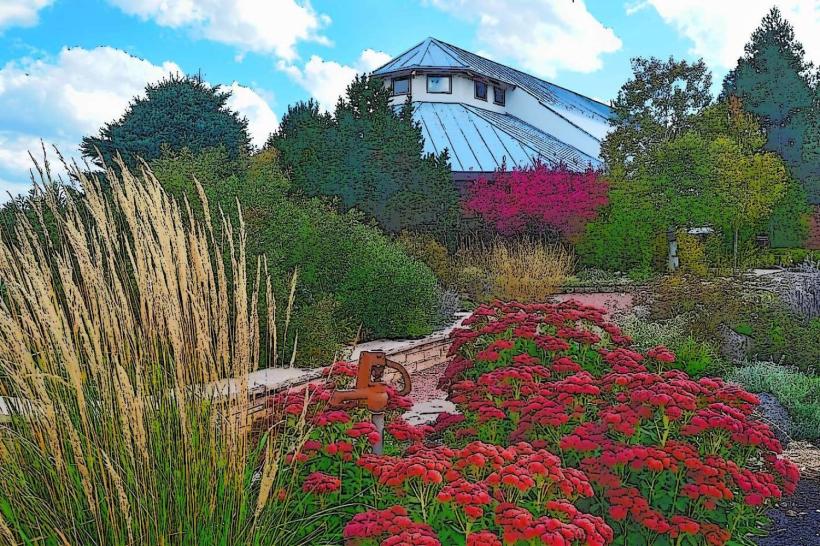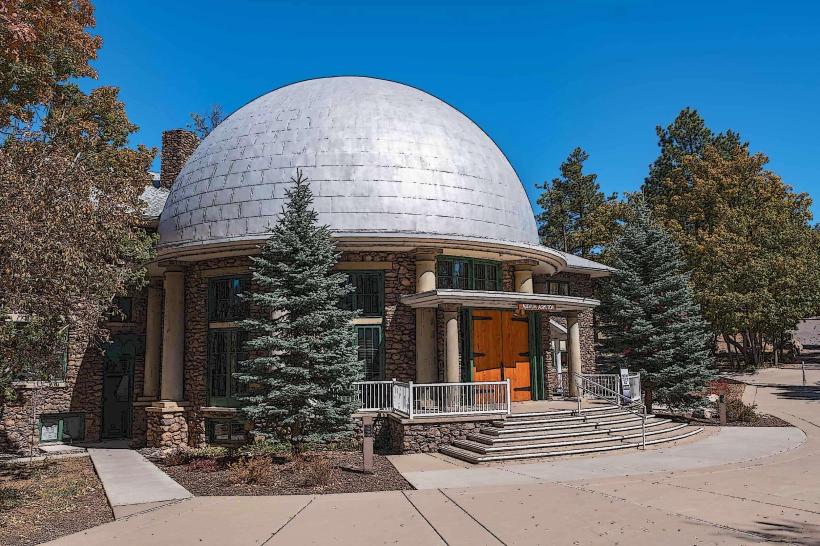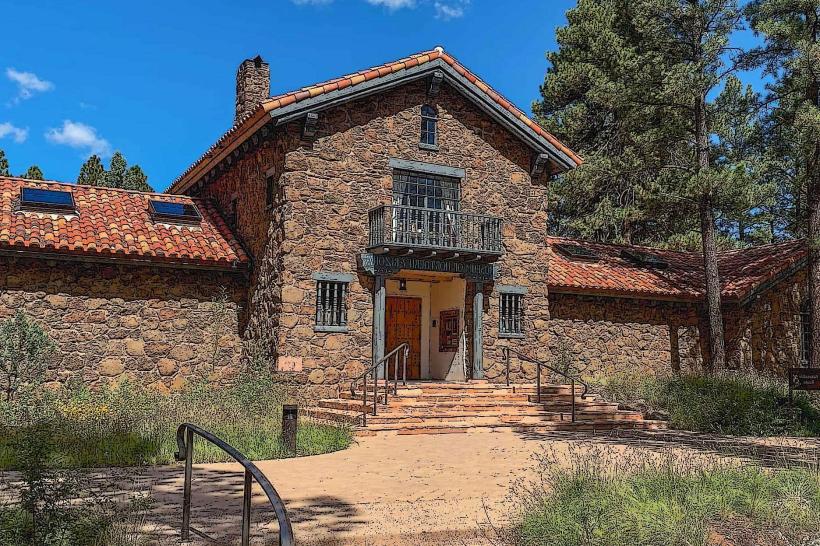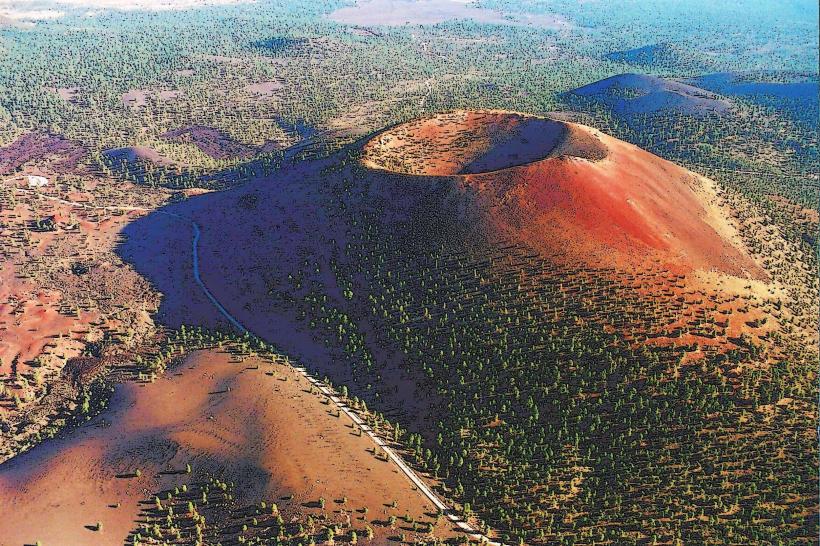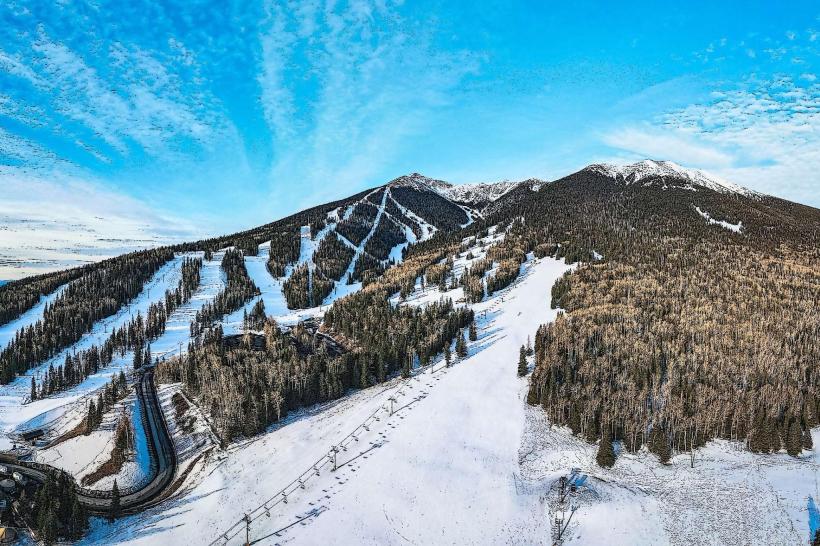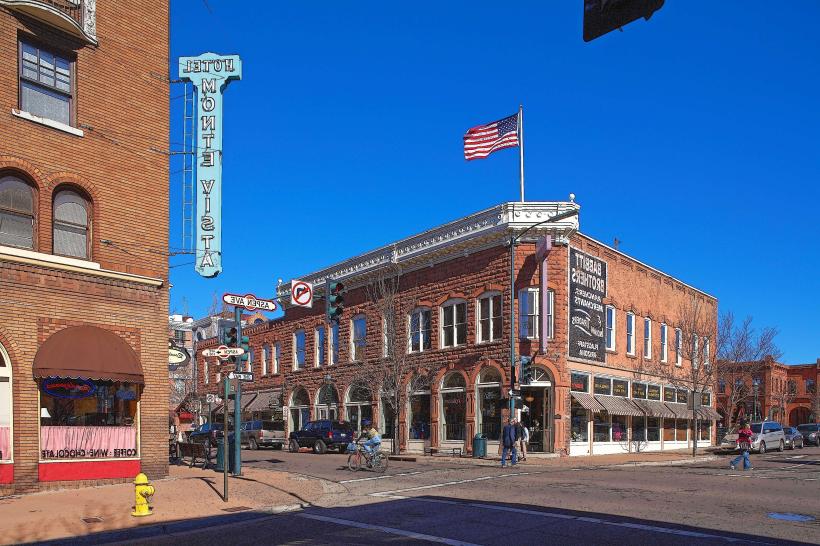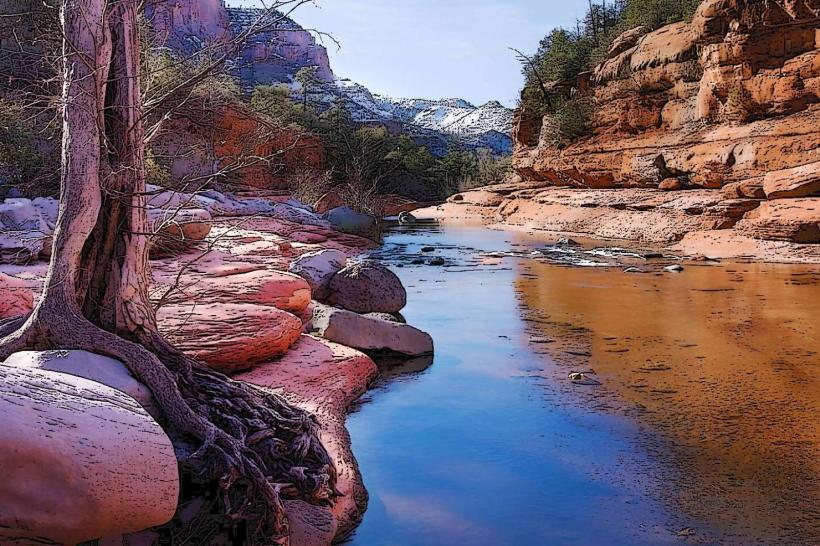Information
Landmark: Walnut Canyon National MonumentCity: Flagstaff
Country: USA Arizona
Continent: North America
Walnut Canyon National Monument, Flagstaff, USA Arizona, North America
Overview
Just southeast of Flagstaff, Arizona, Walnut Canyon National Monument protects towering limestone cliffs and the remains of an ancient cultural landscape, also in this narrow, twisting canyon, you’ll find some of the Sinagua people’s best-preserved cliff dwellings-stone walls tucked beneath overhangs-built by a pre-Columbian culture that flourished here from about 600 to 1400 CE, with Walnut Canyon bustling at its peak between 1100 and 1250 CE, slightly I think, Walnut Creek, a seasonal stream, cut deep into the uplifted Kaibab Limestone, revealing sheer cliffs striped in pale and rust tones that drop more than 400 feet from rim to creekbed, furthermore the monument covers roughly 3,600 acres, stretching over a narrow, twisting canyon and part of the high, windswept plateau.Rock Layers: At the canyon’s rim, pale Kaibab Limestone crowns the cliffs, with the darker Toroweap Formation lying below, and cream-colored Coconino Sandstone forming the base, in conjunction with naturally carved overhangs and ledges in the rock gave the Sinagua people perfect spots to build their homes, sometimes tucked so deep you could feel the cool shade even at midday.At about 6,700 feet above sea level, you’ll find pine needles underfoot and hummingbirds overhead, all thriving thanks to the rich mix of habitats packed into such a slight stretch of land, and the Sinagua Cliff Dwellings were home to the Sinagua people-Spanish for “without water”-a resourceful, inventive culture that mastered dry farming and built far-reaching trade networks, crafting fine pottery, woven textiles, and sturdy stone walls that still stand in the desert sun.In Walnut Canyon, the cliff dwellings tuck beneath broad limestone ledges, their walls pieced together from shaped stone blocks bound with clay mortar, after that homes were tiny, often just one room, tucked into shallow caves or snug alcoves where the air felt cool against the stone.Curiously, They had thick stone walls and flat mud roofs resting on sturdy timbers, with the occasional wooden door or a minute window that let in a thin slice of light, consequently these homes shielded people from the blazing sun, the sharp bite of the wind, and the harsh swings in temperature.Archaeologists believe about 25 families once made their homes in the canyon, spread across roughly 80 dwellings-some still standing, their sun-bleached walls catching the afternoon light, also the cliffside community flourished for roughly a century and a half before the Sinagua began to drift away, perhaps driven by drought, dwindling game, or shifts in their traditions.The Island Trail is a one-mile loop that drops 185 feet into the canyon, taking you down 273 worn stone steps that echo under your boots, alternatively the trail winds along a slim stone ridge, giving hikers a front‑row examine at 25 cliff dwellings, with a few open to step inside and feel the cool shade.Interpretive signs share glimpses of Sinagua daily life, point out why certain walls or doorways were built, and note details like the desert plants thriving nearby, on top of that the hike’s moderate-to-steep climb and high elevation can take a toll, so pace yourself and carry plenty of water-frosty and within easy reach.Rim Trail is a gentle 0.7-mile loop that winds over flat ground right beside the canyon’s edge, where you can hear the wind rush past the cliffs, along with you’ll find scenic overlooks, quiet stretches of forest, and the weathered remains of a pithouse and an heritage pueblo ruin.Somehow, Perfect if you want an easy stroll, or you’re out with toddlers or anyone who can’t handle steep climbs, along with perched along the Mogollon Rim, Walnut Canyon’s shifting slopes and ridges pack an unexpected variety of habitats into a slight space-from breezy ponderosa pine forests on the Upper Rim to sun‑baked piñon‑juniper woodlands below.Canyon slopes shelter oak trees, cliffrose, agave, yucca, and prickly cacti, likewise lower Creekbed: a seasonal stream shaded by black walnut-the tree that gave the canyon its name-alongside shining-green willows and tall, rustling cottonwoods.You’ll spot rock squirrels darting between boulders, mule deer grazing in the brush, lizards sunning on warm stone, and birds ranging from canyon wrens to soaring red-tailed hawks, moreover walnut Canyon isn’t just a stretch of rugged cliffs-it’s a locale where history whispers through the stone walls.The Sinagua had close ties to nearby cultures, including the Hopi, Zuni, and other Puebloan peoples, trading goods like woven blankets and clay pots, in conjunction with modern tribes, especially the Hopi, witness the cliff homes the Sinagua left behind as sacred places of their ancestors, where the wind still seems to carry ancient voices.In 1915, President Woodrow Wilson designated the area as a National Monument to safeguard it from looters and vandals, whose damage was already visible in weathered carvings by the early 20th century, in conjunction with archaeologists are still working to protect the area, and some stretches of the canyon-rugged walls dusted with red sand-remain off-limits to visitors to stop erosion and damage.Perched on the canyon’s rim, the Walnut Canyon Visitor Center features exhibits on Sinagua culture, the area’s striking geology, and its unique plants and wildlife, along with you’ll find educational displays with interactive panels, restrooms and drinking fountains, a cozy bookstore alongside a gift shop, and a viewing deck where the canyon stretches out in wide, sunlit layers; it’s open every day from 9 a.m. Honestly, to 5 p.m, on top of that the Island Trail shuts its gates at 4 p.m, just as the shadows start stretching across the path.I think, We’re closed on Christmas and modern Year’s Day, when the streets are quiet and the air smells faintly of pine, then it’s $25 per vehicle for a seven-day pass, or you can flash a national interagency pass and you’re covered.Accessibility: Wheelchair users can reach the Visitor Center and several stretches of the Rim Trail, where you might catch the scent of pine on the breeze, furthermore the Island Trail climbs sharply and isn’t suited for anyone with mobility challenges or health problems-it’s the kind of path that leaves your legs burning after just a few steps.Pets are welcome on the Rim Trail and in parking areas, but only if they’re on a leash, what’s more you can’t bring them onto the Island Trail or inside buildings.Tip: At higher elevations, the air feels thinner, so pause now and then as you make your way up, also summer can get blazing warm-toss a bottle of crisp water in your bag and don’t forget a hat or sunscreen.Stick to the marked trails, and don’t step inside any dwellings unless you follow the designated path worn into the ground, meanwhile why it’s special: Walnut Canyon National Monument combines sweeping cliffside views with the quiet mystery of ancient cliff dwellings carved into the rock.Unlike sprawling ancient ruins, the cliff dwellings feel close and personal-you can lean in to trace the worn stone and sense a direct link to the people who once lived there, consequently with its compact size, bursts of wildflowers, and a hush you won’t find in busier parks, Walnut Canyon offers a striking glimpse into the resilience of ancient cultures and the rugged beauty of Arizona’s canyon country.
Author: Tourist Landmarks
Date: 2025-10-05

